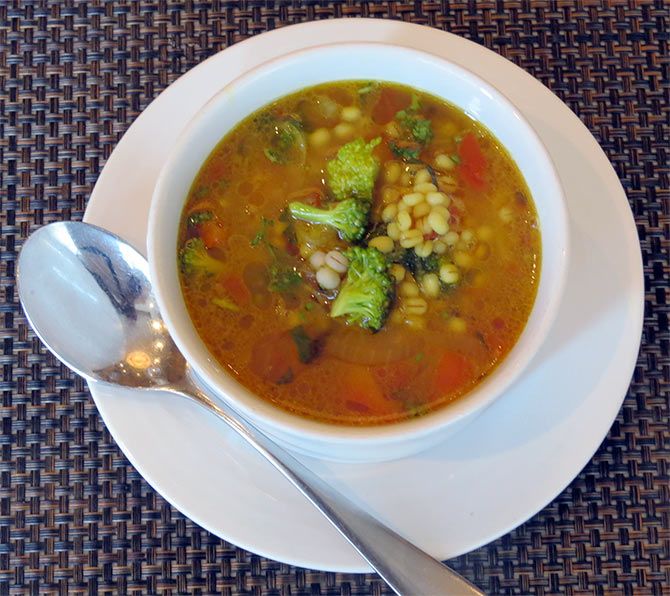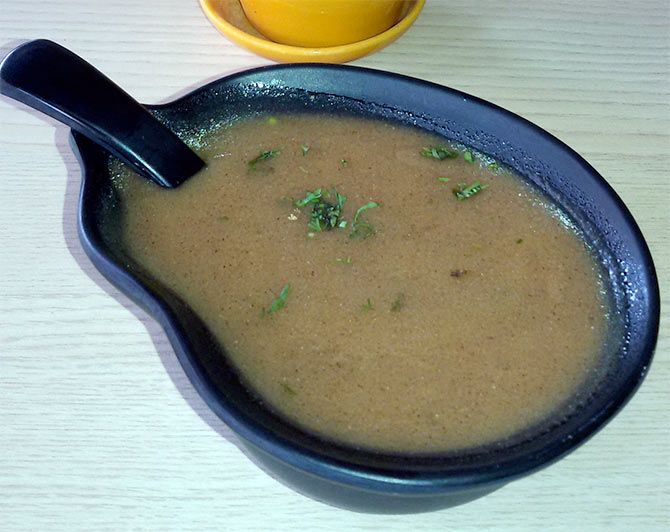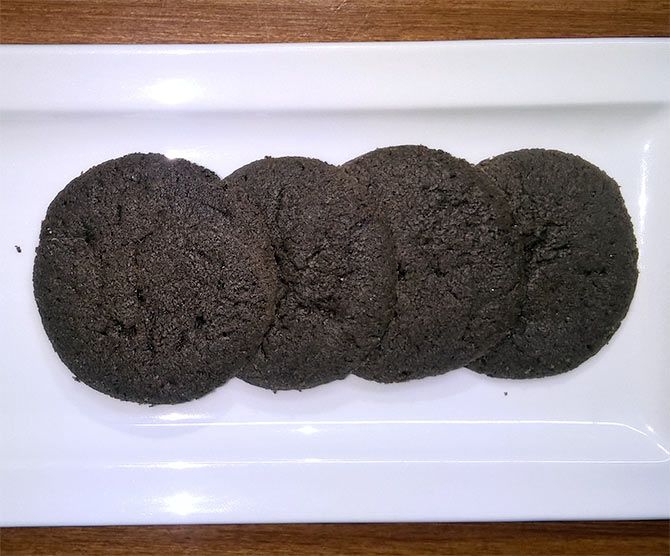Did you know that millets like ragi, jowar, bajra were an integral part of our Indian diet earlier?
Although healthy, they were long forgotten and replaced by relatively unhealthy staples like wheat and rice.
But some traditions never die! These millets are making a comeback onto our dinner tables and how.
Mini Ribeiro tells us how ancient grains can be used to make modern meals.
A plate full of coarse ragi upma or a buckwheat (kuttu) roti with chutney may not be the quintessential breakfast in urban India anymore, but it is once again making an appearance on dining tables in some Indian homes.
Owing to the array of nutritional benefits that millets impart, coupled with the lifestyle changes people are undergoing, ancient grains are back in several household kitchens including hotels.
Prachi Sanghvi, Director and Head of Nutrition, My Dietist Nutrion App elaborates, "Millets and grains help to maintain blood sugar levels, decrease triglyceride levels, maintain bowel movements and increase the bio-availability of vitamins and grains. These should be included in your diet in order to have a higher satiety value due to the presence of good quality fiber, and can be done so in the form of multigrain flour, rotis, salads, chaats and khichdi."
Millets like ragi, jowar, bajra -- an integral part of our Indian ethos and diet -- have long been forgotten, as urban India considered these to be the diet of the poor. They then replaced these with profitable, albeit unhealthy staples like wheat and rice.
Traditionally occupying a pride of place in Indian homes and made use of for breakfast or lunch items like upma, roti, bhakris, porridge, or even a health drink, these millets have now made a comeback. And chefs are busy creating unusual dishes with these, to lure foodies.
Yatendra Rawat, Executive Chef, The Westin Chennai Velachery, reiterates, "The changing lifestyle patterns of consumers, who are more focused on staying fit is the prime reason for these grains to have made a comeback. Almost all of these 'pack a punch' when it comes to a nutritive chart, as these are much superior to wheat or rice, which has been the staple."
Chef Sanjay Thomas, F&B Director, The Suryaa, New Delhi avers, "These grains were typically used for making rotis, which has been a staple food for most of India, especially North India. In addition, these grains were used to make authentic sweet dishes that are still popular desserts."
Nachni or ragi has always been around but, this millet has suddenly acquired a new status in health-conscious India. A great source of calcium, magnesium, iron, protein and fiber, this finger millet is now in demand.
Keppa or ragi roti, once a regular feature in South Indian homes for breakfast, had disappeared. However, today, realising its health benefits, it has made a comeback and is being combined with methi or fenugreek for additional benefits.
Koozh, a ragi-based porridge with a buttermilk base in Chennai is also being revived.
Ragi dosa, dumplings, pancakes and porridge are other dishes, one can prepare with ragi.
Chef Arun Pansare from Saj by the Lake, Malshej Ghat, recommends a nachni or ragi halwa as ragi lends itself perfectly, for a dish of this consistency.
It is not only in the grain form that millets are being used. Flours too are being incorporated into daily diets. Ironically, once upon a time, an Indian kitchen included a single canister of flour.
Today, supermarkets stock myriad options, reflecting increased consumer demand for diversity and thus various flours make way into the kitchens. Each kind of flour has a different nutrition profile and cooking or baking qualities. Thus, blending these grains and flours is important as it tones down flavour profiles, yet providing the nutritional benefits.
Many chefs suggest that ragi, which is generally difficult to digest, should be soaked, sprouted and dried, prior to milling into atta, so as to improve its nutrient absorption.
Arzooman Irani, Executive Chef, InterContinental Marine Drive, Mumbai, adds, "Today these 'alternative' flour options are chosen for gluten free preferences. Ramdana or amaranth is used as a protein option. Ragi balls, a South Indian delicacy, particularly in Karnataka, serve as great energy boosters. Up north, you will find more usage of makkai or corn as a primary source of flour for rotis. The terrain, weather and water play a crucial role and contribute to their popularity in specific states. Similarly, Western India has popularised jowar and bajra for thick rotis. People tend to either have the rotis made like regular wheat rotis, stuff them with spices, or enhance them with flavours like cumin, cinnamon and ajwain, among others."
Adding a small portion of millets to your idli, dosa batter or roti dough is a good way to start, as one then cuts down on the harmful effects of white rice and wheat.
Many feel millets are coarse and tough to cook, thus they are reluctant to make use of them. But thankfully, technology today is advanced and these have become simpler to process.
Bajra, a storehouse of vitamins and minerals, was the principal diet of a large majority of Indians.
Traditionally, kambu sadam or bajra rice was consumed with raw onions and green chillies in every home in Tamil Nadu.
However, people have also taken to millets once again, but in several new avatars. They are experimenting with these in the form of halwa, khichdi and dosas, by combining it with other grain flours.
Sweet or savoury, these millets can be used for both types of dishes. Millets along with oats, whole wheat and jaggery can be made into cookies and ladoos.
Maharashtrians love their nachni satva or pudding, and in Karnataka, a ragi barfi with coconut is eaten with great relish.
It is not as if these millets can only be used for Indian dishes.
Owing to their versatility, these can be combined to create global favourites too. Millet tabbouleh, the popular Lebanese salad is a perfect example, as are jowar pancakes combined with bananas or mango or even soups.
It is not just a resurgence of ancient grains, but foodies and chefs alike, have taken to other grains and cereals too, just in order to create more healthy options.
Amaranth or rajgira, barley, buckwheat or kuttu, are some of the popular choices.
The wonder grain rajgira, comes in flour and grain form, and is used in rotis, theplas, breads and puris. Sprouting amaranth seeds enhances their nutritional value and can be added to salads too. Similarly, buckwheat (not from wheat) is a pseudo grain that is hugely popular as it is gluten free and is eaten freely during Navratri or other fasting days in the form of pooris, rotis and fritters. To avoid monotony, it has made its way into global dishes like risotto, noodles and pizza too.
Some foodies may still be opting for quinoa and chia seeds to spruce up the health quotient in their diets, but most have realised that India is after all the land of wonder grains like millets, and have taken to them with a vengeance. Yes, heritage grains are trendy once again.
Rustic Barley and Broccoli Soup
Recipe by Yatendra Rawat, executive chef, The Westin Chennai, Velachery

Ingredients
- 1 cup barley
- 1 onion (sliced thinly)
- 1 tomato (deseeded and diced)
- 10 gm broccoli florets tiny ones
- 10 gm red pepper (cut in small dices)
- A lemon-sized ball tamarind (soaked in hot water and filtered to remove impurities)
- Few coriander leaves with tender stalks
For tempering
- 1/2 tsp turmeric powder
- 1/2 tsp cumin seeds
- 1 garlic clove mashed (optional)
- 1 tbsp ghee or oil (ghee tastes better)
- 1 red chili (broken) or green chilli
- Pinch of asafoetida
- Pinch of pepper
Method
- Wash the barley well.
- Add three cups of water and cook it on low flame.
- Reserve when three-fourth of the barley is cooked.
- Heat oil in a pan and temper using the tempering ingredients -- cumin seeds, turmeric powder, garlic clove mashed (optional), red or green chilli.
- Add onions, tomatoes, salt and turmeric. Fry for two minutes.
- Pour tamarind juice and a bit of asafoetida.
- Add the tempering to the reserved barley stock with barley. Continue to infuse the flavour over a slow flame for 10 minutes.
- Add broccoli and pepper. Finish off with generous amount of coriander.
- Bring it to a boil and remove the pan from gas.
- Serve hot.
Nachini Kulith Shorba
Recipe by chef Arun Pansare, Maati Baani, Saj by The Lake, Malshej Ghat

Ingredients
- 50 gm nachini (ragi)
- 25 gm kulith (horse gram)
- 1 tbsp ghee
- 1 tbsp onion (chopped)
- 1 tbsp tomato (chopped)
- 1/2 tbsp garlic (chopped)
- 1 tsp ginger (chopped)
For tadka
- 1 pinch mustard seeds
- 1 pinch cumin seeds
- 1 pinch chilli powder
- 1 pinch turmeric powder
- 1 tbsp lemon juice
- Salt to taste
Method
- Heat ghee in a saucepan.
- Add mustard seeds, cumin seeds, chilli powder, chopped garlic, ginger and onion. Saute for two minutes until brown.
- Add tomatoes and saute for two to three minutes again.
- Add nachini and kulith and mix well. Saute until light brown.
- Add four cups of water, mix well and wait till one boil. Make sure there are no lumps.
- Finish with lemon juice. Add salt.
- Strain the soup in a bowl. Serve hot.
Chocolate Buckwheat Cookies
Recipe by chef Sanjay Thomas, The Suryaa, New Delhi

Ingredients
- 125 gm buckwheat flour (kuttu ka atta)
- 125 gm chocolate dark
- 125 gm chocolate chips
- 25 gm cocoa powder
- 2.5 gm soda bicarb
- 60 gm butter (unsalted)
- 3 eggs
- 125 gm brown sugar
- 3 ml vanilla essence
- 2 gm salt
Method
- Mix soft butter and sugar. Add eggs.
- Add melted chocolate, buckwheat flour, cocoa powder, soda bicarb and chocolate chips. Fold in.
- Add vanilla essence.
- Refrigerate for an hour.
- Once done, make small balls and place on a baking sheet.
- Bake at 120 Celcius for 25 minutes. Serve.
Bajra Masala Hara Pyaz
Recipe by Arzooman Irani, executive chef, InterContinental, Marine Drive, Mumbai
Ingredients
For baby roti
- 50 gm whole wheat flour
- 70 ml water
- 5 ml oil
- Salt to taste
For bajra topping
- 50 gm bajra (boiled)
- 10 ml oil
- 1 gm turmeric
- 2 gm yellow chilli powder
- 1 gm cumin seeds
- 1 chopped garlic flakes
- 1 gm asafoetida
- 4 gm onion (chopped)
- 3 gm spring onion
- Salt to taste
Method
For baby roti
- Take a mixing bowl and make the roti dough with whole wheat flour, water, salt and oil.
- Make baby-sized roti with the dough and cook it on a hot griddle.
For bajra topping
- Heat oil in a pan.
- Add cumin seeds, onion and garlic till they sweat.
- Add yellow chilli powder, asafoetida, turmeric, bajra and salt to taste.
To serve
- Arrange baby roti on serving plate.
- Make quenelle of bajra mix on top of roti.
- Garnish with spring onion.
- Serve with pickle of your choice.
ALSO READ
Recipe: How to make Kodo Millet Idli
Gluten-free recipes: Herbed Millet Stew
How to make Haryana's Bajra Khichdi
Have an interesting recipe to share?
Write in to us at getahead@rediff.co.in (subject: Recipe) with your name, hometown and any interesting details about the origin of the recipe, along with a photograph if possible.
We'll publish the best preparations right here on Rediff.com and in India Abroad.









